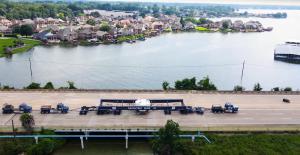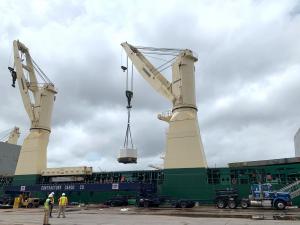First module ships
Having successfully completed an overland journey of 2,400 kilometres, central solenoid module #1 is now on its way across the Atlantic.
US ITER oversees the entire fabrication process of the central solenoid at General Atomics and other vendors. Earlier in 2021, the first module successfully completed rigorous post-production testing that simulated the ITER operational environment, with cryogenic temperatures of 4.5 degrees Kelvin and powering to 40,000 amperes.
The 5-storey tall, 1,000-tonne magnet will induce 15 million amperes of electrical current in ITER's plasma to initiate each plasma pulse and to provide vertical stability of the plasma. To accomplish this, the central solenoid will reach a magnetic field strength of 13 Tesla, about 280,000 times stronger than the Earth's magnetic field. Six modules plus one spare are in preparation; each one is 2 metres tall, 4 metres wide, and wound from 5.6 kilometres of superconducting cable provided by ITER Japan.
The component left the General Atomics magnet manufacturing facility on 21 June and travelled by truck through southern California, Arizona, New Mexico and Texas. It left the port of Houston, Texas, on 7 July.



